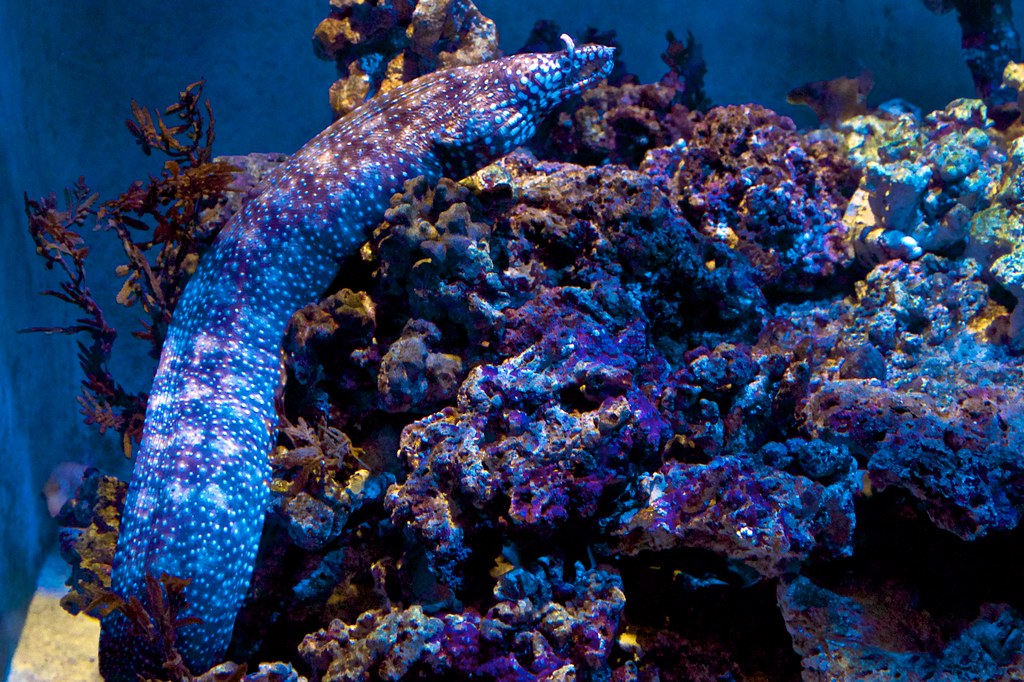The pictures we use in our articles might not show exactly what the words say. We choose these pictures to make you interested in reading more. The pictures work together with the words but don’t take their place. The words still tell you the important facts.
1. The Enigmatic Nature of Eels
Eels have long captivated human curiosity with their snake-like bodies and mysterious behaviors. With over 800 species found in both freshwater and marine environments worldwide, these creatures have managed to keep many aspects of their lives hidden from us, especially when it comes to reproduction.
Despite their widespread presence, the reproductive habits of eels have remained a puzzle for scientists and researchers for years. This mystery has sparked a relentless quest for answers that continues to this day. Let's dive into the intriguing world of eel reproduction and shed some light on the processes that shape the life cycle of these fascinating creatures.
2. The Elusive Eel Life Cycle
Before we can understand eel reproduction, it's essential to grasp their unique life cycle. Eels go through several distinct stages:
- Eggs: The journey begins with tiny eggs laid in specific spawning grounds.
- Leptocephali: These are the larval stage of eels, measuring less than 0.2 inches (5 mm).
- Glass Eels: Transparent juveniles that embark on long migratory journeys.
- Elvers: Young eels that venture into freshwater environments.
- Adult Eels: The mature stage where eels spend most of their lives before returning to spawning grounds.
This complex life cycle, spanning different environments and involving long migrations, adds to the intrigue surrounding eel reproduction.
3. The Mystery of Spawning Grounds
One of the most perplexing aspects of eel reproduction is the location of their spawning grounds. For years, scientists struggled to pinpoint where eels actually reproduce. It wasn't until recent times that researchers made a breakthrough discovery:
- European and American Eels: These species spawn in the Sargasso Sea, a unique region in the Atlantic Ocean known for its sargassum seaweed.
- Japanese Eels: They have their spawning grounds near the Marianas Islands in the Pacific Ocean.
The identification of these spawning areas came after years of painstaking research and observations. Scientists tracked the migratory paths of juvenile eels, noting a decrease in size as they approached these regions.
4. The Incredible Journey of Migratory Eels
Eels undertake remarkable journeys between their living habitats and spawning grounds. These migrations can span thousands of miles, showcasing the incredible adaptability of these creatures.
Key adaptations for migration include:
- Physiological changes to handle different salt concentrations
- Efficient kidney functions for both freshwater and saltwater environments
- Gradual bodily adjustments throughout their journey
These adaptations allow eels to navigate diverse environments with remarkable resilience, ensuring their survival during long and challenging migrations.
5. Unraveling the Reproductive Process
While direct observations of eel mating in the wild remain scarce, scientists have made educated guesses about their reproductive strategies:
- Eels likely engage in external fertilization
- Females release eggs into the water
- Males then release sperm to fertilize the eggs
This process is common among many fish species, but the exact details for eels remain somewhat mysterious due to the challenges of observing them in their natural, deep-sea spawning grounds.
6. Challenges in Captive Breeding
Despite efforts to breed eels in captivity for commercial purposes, success has been limited. The complexities of their biological systems and life cycle pose significant challenges:
- Difficulty in replicating natural environmental cues
- Challenges in simulating long migrations
- Limited understanding of hormonal triggers for reproduction
These hurdles highlight the intricate nature of eel reproduction and the need for further research to unlock its secrets.
7. The Unique Case of Electric Eels
Interestingly, electric eels (which aren't true eels but belong to the knifefish group) offer a contrasting view of reproduction:
- Females lay eggs in nests
- Males build and guard nests using saliva
- Eggs typically hatch during dry seasons
This more transparent reproductive process of electric eels provides an intriguing comparison to the mysterious nature of true eel reproduction.
8. The Quest for Knowledge Continues
While we've made significant strides in understanding eel reproduction, many questions remain unanswered. Ongoing research endeavors promise to unveil new insights into this enigmatic world:
- Further exploration of spawning grounds
- Advanced tracking technologies for migration studies
- Improved techniques for captive breeding
Each new discovery brings us closer to unraveling the full story of eel reproduction, fueling the excitement in the scientific community.
9. Why Eel Reproduction Matters
Understanding eel reproduction is not just a matter of scientific curiosity. It has real-world implications:
- Conservation: Many eel species are threatened or endangered. Knowledge of their reproduction is crucial for conservation efforts.
- Aquaculture: Improved understanding could lead to more successful captive breeding programs, reducing pressure on wild populations.
- Ecosystem Health: Eels play important roles in aquatic ecosystems. Their reproductive success is an indicator of overall ecosystem health.
By unlocking the secrets of eel reproduction, we gain valuable insights that can help protect these fascinating creatures and the environments they inhabit.
10. The Future of Eel Research
As we continue to explore the mysterious world of eel reproduction, new technologies and research methods offer promising avenues:
- Advanced genetic studies to track eel populations
- Satellite tagging for more detailed migration data
- Environmental DNA analysis to detect eel presence in spawning areas
These tools, combined with dedicated research efforts, bring us closer to fully understanding the enigma of eel reproduction.
In conclusion, the world of eel reproduction remains a captivating mystery, filled with incredible journeys, complex life cycles, and unanswered questions. As we continue to unlock its secrets, we not only satisfy our scientific curiosity but also gain valuable knowledge to protect and preserve these remarkable creatures for future generations.






